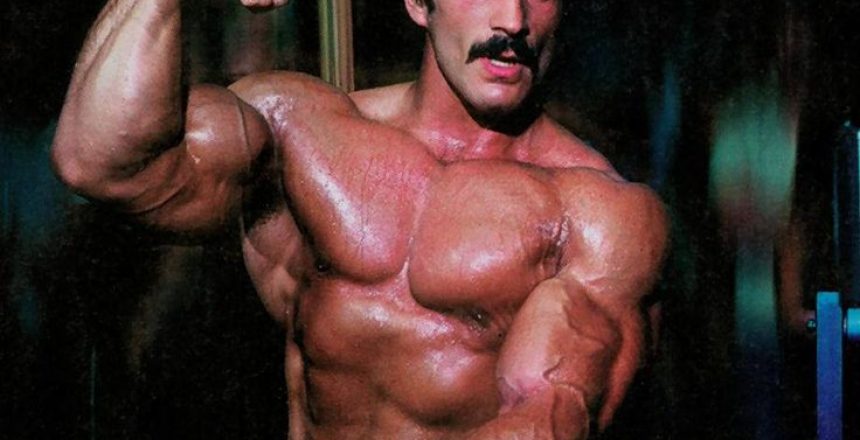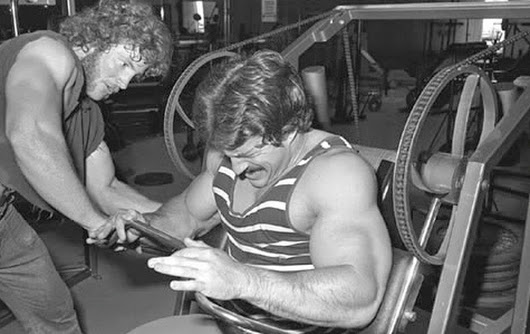High-intensity weight training differs from traditional resistance training in that it involves performing a set to momentary muscular failure, that is, the point at which the weight or resistance can’t be moved for another repetition. Traditional resistance training normally makes use of multiple sets per exercise, each set for a fixed number of reps, and not necessarily to failure. One way to increase the intensity of sets in high-intensity training is through the use of drop sets.
Drop sets – what they are
When performing a set in high-intensity weight training, the goal is to reach momentary muscular failure, at which point all muscle motor units are recruited and the anabolic (muscle-building) stimulus is maximized.
Lifting to failure does not mean lifting until you think it’s too difficult, or to when you feel like stopping, but when you physically cannot complete another single repetition. Reaching failure requires dedication and supreme effort.
Sometimes it’s hard to know whether you have truly reached failure. At the end of the set, you can be wondering whether you stopped too soon, could you have done another rep, did I wimp out and not get to failure?
This is where drop sets come in. Drop sets allow you to ensure that you’ve really lifted until failure.
“Drop” in drop sets means dropping the weight. When you perform a set to failure, you then drop the weight by 10 to 15%, and then immediately perform the same exercise to failure, which might involve only 1 or 2 more reps. You can then drop the weight again, repeat, and do this several times. Doing this with as little time between changing the load is crucial; you don’t want to rest, to give your muscles time to recover.
By the time you get to the end of a drop set, the muscles involved are completely fatigued and you know you’ve gone to failure. You may find that you can’t do another rep using a weight only half as heavy as the one you started with.
Do drop sets work?
The number of variables and techniques in weight training is almost as many as the number of practitioners. Everyone swears by what works for them, but unfortunately many of the traditional practices in weight training have little scientific backing.
Many practitioners of high-intensity weight training, such as Mike Mentzer, have recommended drop sets, but science should have the final word.
One recent study assigned participants to one of three different groups: breakdown (drop) sets, heavy-load breakdown, and traditional (multiple set) training, twice a week for 12 weeks. There were no significant differences in muscular endurance or body composition between groups.
Another study had participants doing only one exercise, dumbbell curls, either 3 sets of low-load curls, 3 sets of high-load, or one drop set, all performed to momentary muscular failure. Muscle cross-sectional area (a proxy for muscle mass), increased similarly in all groups. Muscular endurance improved more in either drop set or low-load. Maximum strength increased only in the high-load and drop set conditions. The drop-set group had the lowest amount of training time per session. The authors concluded that drop sets were as good as multiple sets but with less training time.
In another study, participants performed either a single drop set or 3 sets to failure with 90 seconds rest between sets on a single exercise, the cable triceps push-down. Muscle strength and size increased in both groups, and acute markers of muscle stress were greater in drop set. The authors concluded that “superior muscle gains might be achieved” with a single drop set compared to multiple sets.
What can we conclude about drop sets from these studies?
One study showed no difference, another was mixed, and the last showed possibly better improvement with drop sets.
- A single drop set is at least as good as multiple sets. A drop set takes less time yet compares favorably to multiple sets, which means you can spend less time in the gym. Multiple sets aren’t necessary.
- Performing a drop set may be better for solo weight trainers. I reach this conclusion because in most weight-training studies, coaches are present at every move to encourage participants to exert all-out effort and to reach muscular failure. Most of us don’t have the luxury of a coach, so performing a drop set may be a good way to absolutely ensure that you reach momentary muscular failure.
I perform drop sets on most of my exercises, and I can now be more confident that they’re an effective way to train. At least in my case, they may be superior, since after performing a single set to failure I often doubt myself as to whether I’ve truly gone to failure, and a drop set practically guarantees that you do so.
Drop sets are more readily done using machine moves, since racking weights from a barbell can take long enough that the muscles involved recover somewhat while you’re getting the barbell ready for the next leg of your drop set. On a machine, it’s usually just a matter of quickly moving a peg. Dumbbells work well with drop sets too, since most gyms have racks of dumbbells with different weights, so you can easily replace a set of dumbbells and then quickly grab the next weight down.
Drop sets are really inconvenient with the deadlift, at least in my gym, since replacing 20 kg (45 lb) plates on a barbell on the floor takes time. So when I do deadlifts, I often use another technique similar to a drop set, rest-pause. Rest-pause involves resting just long enough, perhaps 5 to 10 seconds, after a set until you’re able to perform one more repetition. This can be repeated as many times as you like – I typically do it around 3 times.















13 Comments
The Nautilus pre-exhaust; for example a set of leg extensions immediately followed with leg presses is similar. Jones built machines that featured both exercises in the same unit.
Right, I do that combo myself.
I will give this a try and looking forward to reading the book when it arrives Monday.
For what it’s worth, I’m 70, and I lift relatively heavy weights to absolute failure. But I have found that drop sets or multiple sets are excessive and affect my ability to do other things. Currently I am doing a fair amount of jiu jitsu, and I find that makes me stronger as well, so I need to save energy for that…
I know what you mean, Peter. I really have to limit myself at lifting weights, otherwise I feel so dead on off days that I get nothing done.
I started doing a Body By Science “Big Five” workout a few weeks ago, working to what felt like exhaustion, but I wasn’t getting the “right” soreness afterward. I tried doing the same but with drop sets yesterday and it sure feels like it was more effective.
That’s great, Alec. The same experience motivated me to do drop sets. A full body BBS workout just somehow didn’t cut it for me. With drop sets I leave the gym knowing that I’ve given it all I’ve got.
Is it possible to exercise to exhaustion when doing squats without a machine?
If you mean to failure, no, not really. You risk getting stuck. For that you need a leg press or Smith machine.
I do squats to absolute failure (and I go to failure thanks to Rogue H&F), with the key being that the safety pin is barely below my lowest point in the squat. Then after I absolutely cannot lift the bar another millimeter and try a few more surges through the heels to ensure I’m spent, I can fall forward ever so slightly and have the pin catch the bar. It works quite well, in fact I think squatting is one of the easiest to fail on.
Mr. Mangan, in your opinion are drop sets valuable only instrumentally as they ensure you’ve reached mechanical failure, or can they be valuable even assuming one has reached mechanical failure on the pre-drop set?
Hi Ben – of course you’re right about going to failure on squats with the use of a safety pin and rack. They don’t have a device like that at my gym so I didn’t even think of that. As for the value of drop sets, in my opinion they are of value instrumentally, as you put it, by ensuring that you’ve gone to failure. There have been just too many studies showing that multiple sets are no better than a single set to failure for muscle hypertrophy, so if drop sets were significantly better in that regard, we’d likely know it. Caveat that that’s my opinion; the issue would have to be researched in more detail.
I hadn’t thought of leg presses so thanks for that idea.
I’m always confused by the idea of what it means to take a set to failure or at least why it isn’t obvious you have.
I started 5×5 a few years ago (I switched to 5-3-1 awhile back, now I’m using Bill Starr).
I have always gone to failure, at least on my heavy set. How can you not know you’re going to failure on the bench press – you get stuck under the weight!? Same for the squat – I fail and have to rack on the safety pins. The deadlift – I pull until I can’t pull anymore.
Typically, I’m trying to crank out an extra rep, each workout. I shoot for my goal, I either get it or fail. THere’s a safe way to fail on all the lifts.
I wonder if this is more a bodybuilder thing (“am I lifting to failure?”) with their lower weight and higher reps and not a powerlifter thing.
I’ve read about “rest pause” training and am considering that – at least for my overhead presses. It’s basically a long, drawn out set where you pause 20 or so seconds between reps. For powerlifter training you lift 90+% of your 1rep max this way.